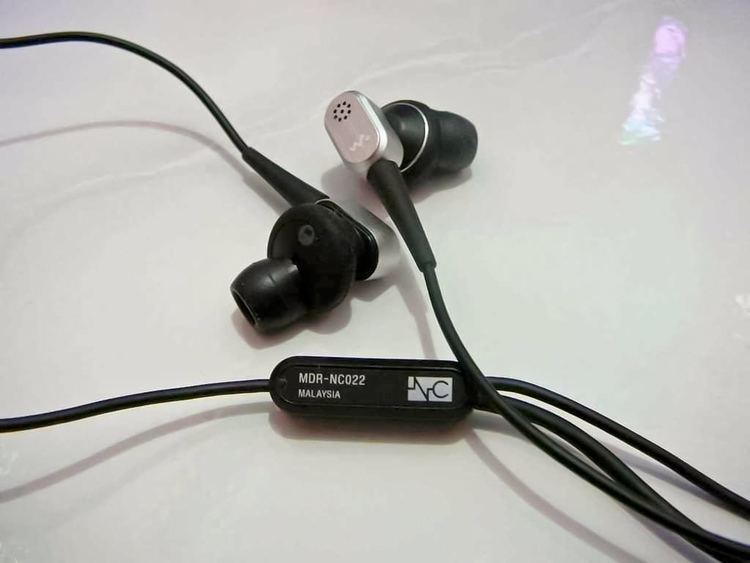 | ||
Noise-cancelling headphones are headphones that reduce unwanted ambient sounds using active noise control. This is distinct from passive headphones which, if they reduce ambient sounds at all, use techniques such as soundproofing.
Contents
Noise cancellation makes it possible to listen to music without raising the volume excessively. It can also help a passenger sleep in a noisy vehicle such as an airliner. In the aviation environment, noise-cancelling headphones increase the signal-to-noise ratio significantly more than passive noise attenuating headphones or no headphones, making hearing important information such as safety announcements easier. Noise-cancelling headphones can improve listening enough to completely offset the effect of a distracting concurrent activity.
Theory
To cancel the lower-frequency portions of the noise, noise-cancelling headphones use active noise control. They incorporate a microphone that measures ambient sound, generate a waveform that is the exact negative of the ambient sound, and mix it with any audio signal the listener desires.
Most noise-cancelling headsets in the consumer market generate the noise-cancelling waveform in real-time with analogue technology. In contrast, other active noise and vibration control products use soft real-time digital processing.
To prevent higher-frequency noise from reaching the ear, most noise-cancelling headphones depend on soundproofing. Higher-frequency sound has a shorter wavelength, and cancelling this sound would require locating devices to detect and counteract it closer to the listener's eardrum than is currently technically feasible, or would require digital algorithms that would complicate the headphone's electronics.
Noise-cancelling headphones specify the amount of noise they can cancel in terms of decibels. This number may be useful to compare products, but does not tell the whole story, as it does not specify noise reduction at various frequencies.
In aviation
By the 1950s, systems were created to cancel the noise in helicopter and aircraft cockpits. Noise-cancelling aviation headsets are now commonly available.
A number of airlines provide noise-cancelling headphones in their business and first class cabins. Noise cancelling is particularly effective against aircraft engine noise. In these cases, the headphones are about the same size as normal headphones. The electronics, located in the plane handrest, take the sound from the microphone behind the headphone, invert it, and add it back into the audio signal, which reduces background noise.
Drawbacks
Noise-cancelling headphones have the following drawbacks:
